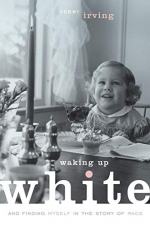
|
| Name: _________________________ | Period: ___________________ |
This test consists of 5 multiple choice questions, 5 short answer questions, and 10 short essay questions.
Multiple Choice Questions
1. How old was Irving when she demanded to know why her 19-year-old sister Diane was not being allowed to see the film A Patch of Blue?
(a) 12.
(b) 10.
(c) 5.
(d) 13.
2. Irving found that which element creates a state of fear, which then puts people into survival mode?
(a) Hatred.
(b) Deception.
(c) Powerlessness.
(d) Confusion.
3. Irving recounts in Chapter 28: I Am the Elephant a conversation she had with her friend Kathy, who hails from which country?
(a) Trinidad.
(b) Bosnia.
(c) El Salvador.
(d) Brazil.
4. In Chapter 22: Why Do I Always End Up With White People?, Irving states that she was first introduced to the city of Cambridge in which year?
(a) 1986.
(b) 1972.
(c) 2011.
(d) 1999.
5. Irving remarks that when she was Jared's age, she had already decided that she would be taking which action someday?
(a) Going to college.
(b) Becoming a teacher.
(c) Having children.
(d) Getting married.
Short Answer Questions
1. Irving cites the vast difference in how people of color and white people relate to which institution in America?
2. In which state did Irving attend an event advertised as being "by and for people of color" (141)?
3. Irving discusses the process of freeing herself from the restraints of what type of etiquette?
4. What kind of test is the Myers-Briggs test, as revealed in Chapter 35: If Only You'd Be More Like Me?
5. What term describes a form of help that disempowers the aided person or group?
Short Essay Questions
1. What conclusions did Irving draw after seeing the results of the Magic Step activity?
2. In what way does Irving indicate in Chapter 28: I Am the Elephant that growth can be painful?
3. What events led up to the experience with the mirror Irving describes in Chapter 33: Perception and Fear?
4. How does Irving go about outlining the privilege inherent in her own life?
5. How did the magic step activity change Gerrard's behavior and why?
6. What alternative to the superior/inferior paradigm does Irving suggest in Chapter 35: If Only You'd Be More Like Me?
7. What did Irving learn from her experience with the mirror one year into her "waking-up process" (199)?
8. What does Irving mean in Chapter 36: The Dominant White Culture when she writes, "I never felt white; I just felt like Debby" (212)?
9. Provide evidence for the conclusion that Irving wants to provide the reader of Waking Up White with practical advice.
10. Who came to assist Irving after the conflict at the conference by and for people of color and how did they help?
|
This section contains 947 words (approx. 4 pages at 300 words per page) |

|




